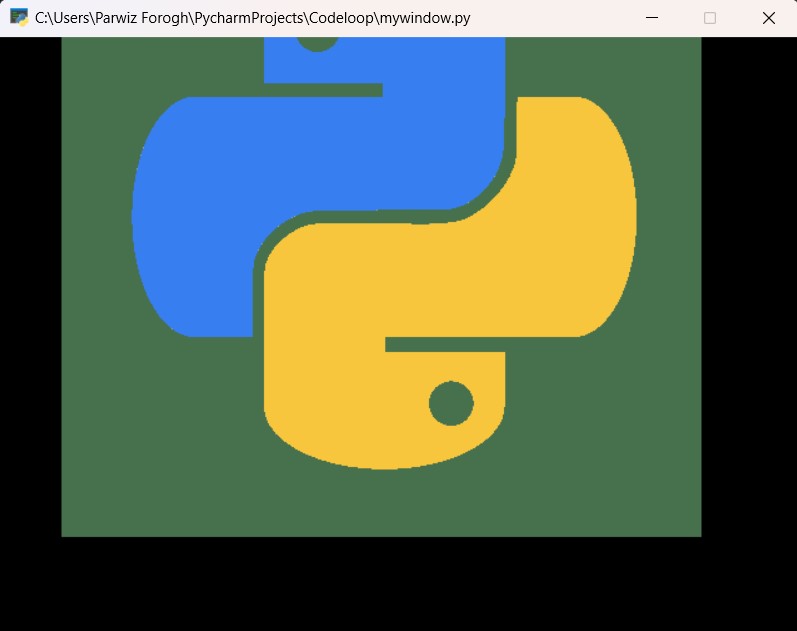in this Pyglet Python article i want to show you Adding Image To Application, so first of all let’s talk about Python Pyglet.
What is Pyglet in Python?
Pyglet is a cross-platform multimedia library for Python, and it is used for developing games, multimedia applications, simulations and interactive experiences. It provides an easy interface for handling graphics, sound, input devices and windowing.
Key features of Pyglet:
- Graphics: Pyglet provides a flexible graphics module for rendering 2D and 3D graphics. It supports OpenGL for hardware-accelerated rendering and includes features such as sprites, textures, batch rendering and shaders.
- Windowing: Pyglet allows you to create and manage windows for displaying graphics and handling user input. It supports multiple windows, window resizing, fullscreen mode, and event-driven input handling.
- Audio: Pyglet includes a powerful audio module for playing and manipulating sound effects and music. It supports different audio formats and provides features for streaming, positional audio and sound synthesis.
- Input Handling: Pyglet provides support for handling user input from keyboards, mice, joysticks, and other input devices. It offers event-based input handling and supports customizable key bindings.
So first let me write the complete code for Python Pyglet Adding Image
|
1 2 3 4 5 6 7 8 9 10 11 12 13 14 15 16 17 18 |
import pyglet # Create a window object window = pyglet.window.Window() # Load an image resource image = pyglet.resource.image('python.png') # Event handler for drawing @window.event def on_draw(): # Clear the window window.clear() # Draw the image at coordinates (50, 80) image.blit(50, 80) # Start the application event loop pyglet.app.run() |
So this line of code is for creating our window in pyglet
|
1 |
window = pyglet.window.Window() |
This line of code is for loading our image from our directory, make sure that you have copied an Image in your project directory.
|
1 |
image = pyglet.resource.image('python.png') |
After that we create our def on_draw() method, An on_draw() event is dispatched to the window to give it a chance to redraw its contents. pyglet provides several ways to attach event handlers to objects; a simple way is to use a decorator:
|
1 2 3 4 |
@window.event def on_draw(): window.clear() image.blit(50,80) |
Within the on_draw() handler the window is cleared to the default background color (black), and the label is drawn.
And finally we we call:
|
1 |
pyglet.app.run() |
This will enter pyglet’s default event loop, and let pyglet respond to application events such as the mouse and keyboard. Your event handlers will now be called as required, and the run() method will return only when all application windows have been closed.
If you are coming from another library, you may be used to writing your own event loop. This is possible to do with pyglet as well, but it is generally discouraged; see The application event loop for details.
Run the complete code and this will be the result

FAQs:
How to add an image in a Python program?
For adding an image in Python program, you can use different libraries such as Pillow, OpenCV or Pygame. This is a general approach using Pillow library:
- Install Pillow library (pip install pillow).
- Load the image using Image.open() method.
- Optionally, manipulate the image (resize, rotate, apply filters, etc.).
- Display or save the image as needed.
What is pyglet sprite?
In pyglet, a sprite is an object that represents a graphical element in a 2D scene. Sprites are typically used for displaying images, animations or other visual elements in games or multimedia applications. Pyglet provides pyglet.sprite.Sprite class for creating and managing sprites. Sprites can be positioned, scaled, rotated and manipulated dynamically inside pyglet application.
How to display the image in Python?
There are different ways for displaying an image in Python, and it depends on your requirements and the libraries you are using. These are a few common methods:
- Using Pillow library: Load the image using Image.open() and display it using Image.show().
- Using matplotlib: Use matplotlib.pyplot.imshow() to display the image in a matplotlib figure.
- Using pyglet: Create a window and use pyglet.sprite.Sprite or pyglet.resource.image() to display the image within the window.
Subscribe and Get Free Video Courses & Articles in your Email